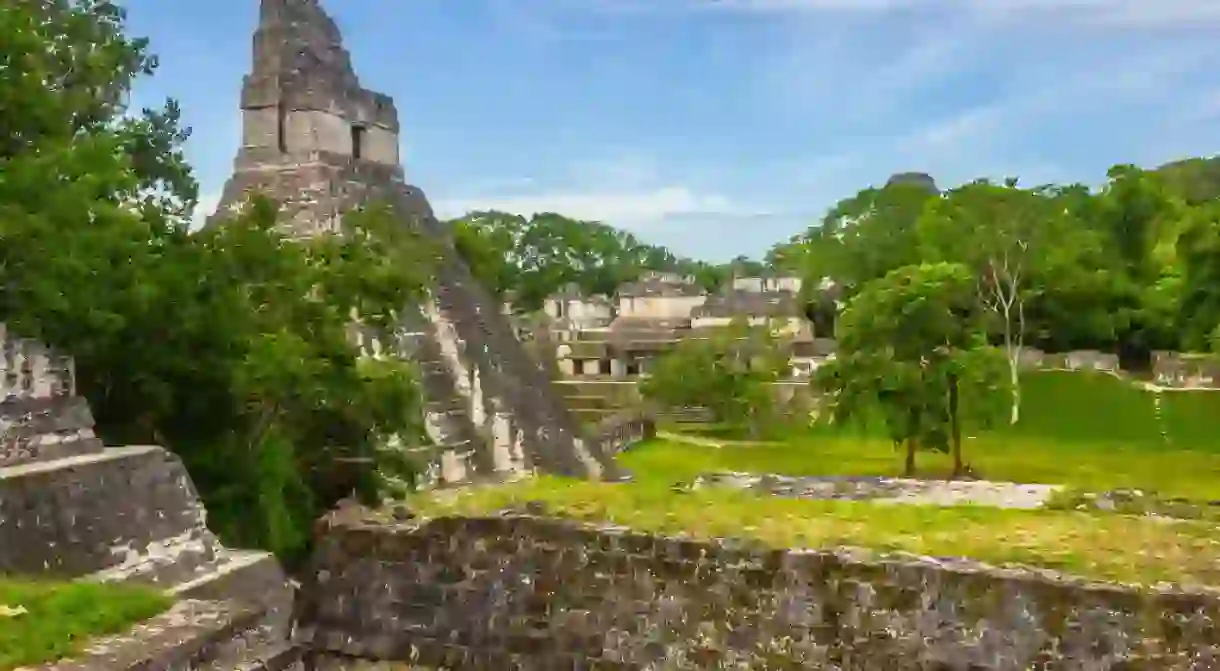A Brief History of Guatemala's Tikal Ruins

The ancient Mayan kingdom of Tikal is Guatemala’s most popular tourist attraction. Located deep in the jungle in the country’s Peten region, Tikal was the most prosperous city of the Mayan Classic Period, and the beating heart of the Mayan empire. Tikal became a UNESCO World Heritage Site in 1979, and its jungle-shrouded towering pyramids draw visitors from all over the world. Yet, even today, this ancient site remains mysterious. Here’s a brief history of Guatemala’s mysterious lost kingdom.
While the first archaeological records at Tikal date back to around 1000 BC, it wasn’t until around 300 BC that Tikal started to thrive. Before then, we know that the area was used for farming, as traces of early agriculture have been found here. There were also people living here then, as Mayan ceramics were discovered in a burial chamber dating back to around 700 BC.

By 378 AD, Tikal was the dominant city in the region and ruled most of Mesoamerica politically, economically and militarily (Mesoamerica refers to Mexico and Central America before the arrival of the conquistadors in the 1500s). Today, the ruins of Mayan kingdoms are found throughout Belize, El Salvador, Honduras and Mexico, but none are as large or spectacular as Tikal, which at the height of its influence covered an area of 576 square kilometres (222 square miles).

While experts aren’t sure of the precise size of Tikal’s population, it’s thought that it was between 50,000 and 100,000 people during the Mayan Classic Period. Most researchers agree that the number is closer to the top end of this spectrum, making Tikal one of the largest cities of its time.
Tikal was ruled by a powerful dynasty that usually passed power down from father to son, and this aggressive superpower often warred with its neighbours. Its most significant conflict was with a Mexican city-state called Calakmul. The two states had several battles, but in 562 AD Calakmul finally defeated Tikal, causing the first hiatus in Tikal’s power. However, by 695 AD, Tikal was back on top once again.

Aside from aggression in battle, we know there were other ways in which the people of Tikal displayed violent traits. Ritual human sacrifice was practiced by the Mayans, and documentation of sacrifice has been found here. Sacrifice with bow and arrow is depicted upon the walls of Tikal Temple II, and another structure depicts a human sacrifice in which a person is bound to a stake and is being disemboweled.
In spite of this, in many ways Tikal was an incredibly progressive kingdom. By 600 AD it had a sports stadium, a school, a hospital and a library packed with thousands of books, and the city itself is an archaeological wonder. The limestone buildings include royal palaces, houses, administrative buildings and inscribed stone monuments. There are also several temples and pyramids, the tallest being Temple IV – or the Temple of the Two-Headed Snake, as it was known to the Mayans.

One intriguing factor about Tikal is that no one knows for certain what caused its demise. By 950 AD Tikal had been entirely abandoned. How, and why, did a city that had existed for over 1,000 years suddenly disappear? Most researchers believe drought and deforestation were at the least contributing factors, but these are still just theories.
The lingering mystery of Tikal’s downfall now forms part of its appeal – as an ancient Mayan powerhouse that thrived, was abandoned and was then reclaimed by the jungle.













